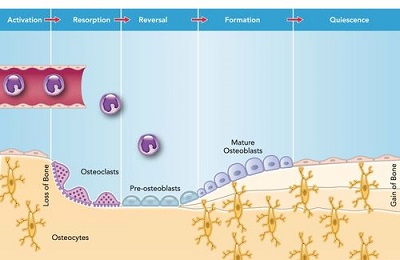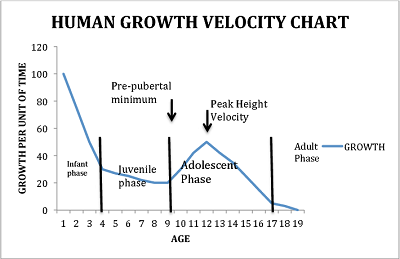Due to human growth hormone’s role as an anabolic, or pro-growth, hormone — and its associated muscle-strengthening and bone-building activities — many adults wonder whether HGH can lengthen the bones and increase height even after reaching maturity. Below, we will analyze the factors that affect height, the role of HGH in determining height, and how you can increase HGH levels in your own body to produce the life-changing results you hope to see.
How Is Height Determined in the Human Body?
Several factors go into determining ultimate height. The most important components of the formula for height are:
- Genetics. The DNA that an individual inherits from parents is the single biggest factor that affects his or her adult height (AH) that a person will reach – in general, shorter parents tend to raise shorter children while taller parents produce taller children.
- Nutrition. After genetics, nutrition is the second-most important consideration for AH. Children who get enough food to eat (and the right kinds of foods) are more likely to reach their full height potential than children who are deprived of adequate nutrition. Adequate calcium and protein intake is particularly important for healthy bone growth.
- Activity levels. Physical activity in developing bodies helps to mold and strengthen the bones.
- Underlying medical conditions. Illness or injury — such as head trauma that impacts the pituitary gland in the brain where HGH is produced – can hinder healthy bone development.
- Hormones. The right combination of hormones must be present in the body to stimulate normal bone growth.
In the next section, we’ll take an in-depth look at the relationship between hormones and healthy bone development.
What is the Role of HGH in Determining Height?
 The initial process of bone growth is called “osteogenesis” or “ossification.” When a fetus is still in the mother’s womb, osteogenesis has already begun. The two types of fetal, or “primary,” ossification are:
The initial process of bone growth is called “osteogenesis” or “ossification.” When a fetus is still in the mother’s womb, osteogenesis has already begun. The two types of fetal, or “primary,” ossification are:
- Intramembranous ossification
- Endochondral ossification
Of course, the normal development of a baby’s bones is not completed during pregnancy. “Secondary ossification” refers to bone growth that occurs after birth. Beginning in infancy, the bones grow at different rates depending on age. Initially, the skeleton develops rapidly from ages 0-4. The growth rate then levels off until it rises sharply again in adolescence, at which point the growth rate again declines until the bones finish lengthening around age 18-20.
So, what role does HGH play in this process of bone growth?
How Does HGH Affect the Skeleton and Bones?
In addition to lengthening bones, HGH fortifies bone strength by making them thicker and less prone to breaks. Over time, throughout the development of the skeleton, HGH and other hormones spur the thickening of bone mass. Keeping bone density high is critical throughout the aging process to prevent osteoporosis, an age-related decline in bone mass that puts those who experience it at greater risk of debilitating bone fractures.
Growth hormone and ‘Bone Remodeling’
Although the bones no longer lengthen after around age 20, they are constantly undergoing a process called “bone remodeling” that extends late into life. During bone remodeling, specialized cells called “osteoclasts” break down mineralized bone tissue. Afterward, different cells called “osteoblasts” form new bone tissue.
The five phases of bone remodeling are:
- Activation
- Resorption
- Reversal
- Formation
- Quiescence
Roughly 10-20% of the skeletal mass of the average person is remodeled in any given year.
Bone remodeling occurs on its own and may also intensify in response to events like micro-fractures or repeated stress, or as an attempt to optimize the mechanics of the skeletal movement. Beneficial bone remodeling can be controlled to an extent.

When you lift weights, for example, the healthy, controlled stress exerted on the bones triggers greater bone remodeling as the body thickens the bones where needed to accommodate the heavy loads.
As an active hormone both in vitro and in vivo, HGH aids in the bone remodeling process in key areas:
- Triggers osteoblastic proliferation
- Boosts levels of two hormones critical for bone remodeling — insulin-like growth factor 1 (IGF-1) and insulin-like growth factor 2 (IGF-2)
- Optimizes levels of other hormones implicated in bone remodeling such as parathyroid hormone (PTH), calcitriol, glucocorticoids, testosterone (in men), and estrogen (in women)
How Does HGH Affect Muscle Tissue?
Bone health is closely tied to musculature; the evidence suggests that stronger, bigger muscles correspond to stronger, thicker bones. Therefore, supporting healthy muscle tissue and limiting the risk of age-related conditions that cause muscle loss like sarcopenia is critical for maintaining bone health.
HGH supports healthy muscle tissue in the following ways:
- Stimulates protein synthesis, the building blocks of muscle
- Increases lean muscle mass in tandem with IGF-1
- Optimizes efficient cellular energy use, allowing for greater exertion during muscle-building exercises
How Much Difference Does HGH Make in Affecting Height?
HGH is essential for attaining normal adult height (AH). Without enough HGH — due to genetic conditions from birth or due to childhood illness or injury – the human body cannot development as it should. One study that looked at the effects of HGH on height found that growth hormone “significantly increases the adult height” of children with idiopathic short stature, the medical term for abnormal bone growth during the initial years of life.
Even when HGH is supplemented at a later developmental stage in adolescents with growth hormone deficiencies, HGH therapy can increase adult height.
The Bottom Line: Can HGH Make You Taller in Adulthood?
While growth hormone plays a critical role in growing bones in childhood and keeping them thick throughout life with continual bone remodeling, HGH does not increase height for adults who begin taking it after they have gone through adolescence.
How to Naturally Increase Growth Hormone Levels
Keeping HGH levels in the optimal range throughout life is important. Here are the proven ways to boost HGH production for children and adults.
Safely Increasing Human Growth Hormone Levels in Children
 In the absence of injury or genetic defect, children generally have an ample supply of circulating HGH (and other crucial hormones) to fuel their healthy development. Sometimes, though, HGH levels might be sub-optimal. In these cases, the following interventions may correct the issue:
In the absence of injury or genetic defect, children generally have an ample supply of circulating HGH (and other crucial hormones) to fuel their healthy development. Sometimes, though, HGH levels might be sub-optimal. In these cases, the following interventions may correct the issue:
- Making sure the child gets plenty of sleep
- Ensuring adequate nutritional intake (especially protein and calcium)
- Getting regular exercise
If an underlying medical condition is causing low HGH in children, the only FDA-approved medical intervention for treating growth hormone deficiency (GHD) is hormone replacement therapy (HRT) with somatropin. Somatropin is a synthetic, lab-produced version of HGH that mimics the activities of naturally-occurring HGH.
Safely Increasing HGH Levels in Adults

Adults, even those with a healthy pituitary gland and no other major risk factors, may develop an HGH deficiency that presents later in life. In addition to the HGH-boosting practices described above for children, adults can also boost their HGH levels with:
- Stress-reduction techniques such as breathing exercises, yoga, or meditation.
- High-intensity interval training (HIIT) and other high-intensity workout programs.
- Supplementation. Essential amino acid, GABA, melatonin, and creatine supplements are all shown to produce modest HGH gains in otherwise healthy subjects.
Daily intermittent fasting. Due to the hormonal shifts that occur during a fast, HGH levels skyrocket in a fasted state. A simple daily IF routine – for example, the 16:8 method – can boost endogenous HGH levels three-fold.
HGH Replacement Therapy for Strong Bones and Overall Health
In addition to supporting healthy, thicker bones and strong muscle tissue, HGH also performs the following work in the human body:
- Keeps metabolism (fat burning) high for sustained energy
- Improves the quality and appearance of skin, hair, and nails
- Protects mental health and helps prevent mental health disorders
- Exerts protective effects on the heart and blood vessels
- Optimizes libido (sexual desire) and healthy sexual function
Get Started With Hormone Replacement Therapy (HRT) Today to Support Healthy HGH Levels
It’s never too late to take control of your hormone health. By beginning to practice the daily HGH-boosting techniques described above and contacting a licensed endocrinologist (hormone doctor), you are taking the first steps to on the journey to recovering your youthful vitality – including building stronger, healthier bones.

